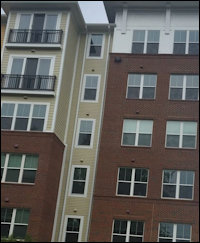The Fairfax Board of Supervisors is adding $5 million to its affordable housing budget next year, raising the total expenditure to $15 million. The Washington Post report of the budget action provides few details other than the fact that the money will fund an extra affordable-housing staff position and two positions for a new Office of Environmental and Energy Coordination.
The sum is a drop in the bucket for Virginia’s largest locality. Unless Fairfax is serious about increasing the supply of housing across the county — not just in Tysons, where residential growth will be choked by traffic congestion issues — the board action represents nothing more than virtue signalling. It’s a way of saying, “We care,” without really doing anything.
According to Zillow, the median home value listed in Fairfax County today is $619,000. An extra $5 million could subsidize the cost of 100 middling-cost houses — maybe 200 lower-priced houses — a year in a locality of 1.15 million people.
One way to create more affordable housing in Fairfax County would be to permit smaller lot sizes or, heaven forbid, more multifamily housing. Another way would be to permit homeowners to rent out basement or garage apartments. Yet another way would be to encourage redevelopment of land zoned for retail, office and industrial space as mixed-use (which is happening in places). There are two main obstacles in Fairfax to the natural transition from suburban to urban densities (as there are almost everywhere in Virginia): fear of traffic congestion, and fear of changing the nature of the neighborhood.
Developing housing in mixed-use districts addresses the traffic congestion issue in two ways. First, by making more destinations accessible on foot, it reduces the number of car trips per household. Second, by increasing the number of dwellings and destinations within walking distance of a mass transit line, it diverts people from cars to buses and rail. Does more mixed use magically solve the congestion problem? No. But intelligent integration of mixed use development, higher densities and mass transit can dampen congestion, as anyone can see in neighboring Arlington County.
Fairfax County planners are well conversant with the principles of Transportation Demand Management, but execution of those principles requires exacting attention to detail and does not yield immediate results. A single mixed-use project doesn’t accomplish much. Seamlessly connect a few dozen mixed-used projects, though, and you can transform the urban landscape in way that materially reduces the number of car trips per household along with the attendant congestion.
It’s a lot easier, though, to throw an extra $5 million into the affordable-housing pot, sponsor a few token projects, and pretend you’re making a difference.



